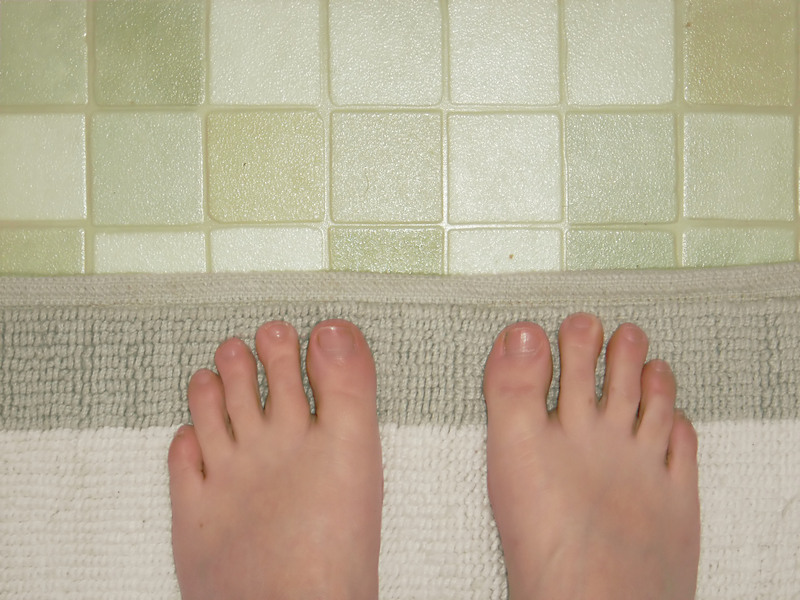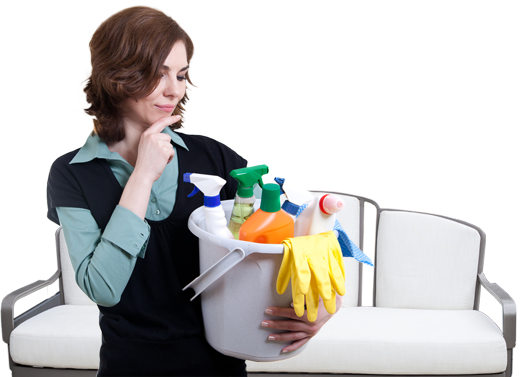Sofa Cover Care: Washing Methods to Prevent Damage
Posted on 13/09/2025
Sofa Cover Care: Washing Methods to Prevent Damage
Sofa covers are essential for maintaining the look and comfort of your living space. They protect your furniture from stains, spills, pet fur, and daily wear and tear. However, improper cleaning techniques can lead to fading, shrinking, or damaging the fabric. That's why understanding the best sofa cover cleaning methods is crucial to extend their lifespan and keep them looking fresh. In this comprehensive guide, we'll explore how to wash sofa covers to prevent damage and share expert tips on proper maintenance.

Why Proper Sofa Cover Care is Important
Your sofa is a centerpiece in the living room, and a well-kept cover ensures it always looks inviting. Regular sofa cover maintenance not only preserves the aesthetics but also protects the underlying furniture. Understanding best practices for washing sofa covers reduces the risk of fabric damage and saves you from unnecessary replacement costs.
- Extends cover lifespan: Appropriate care prevents wear and tear.
- Health benefits: Removes dust, allergens, and bacteria.
- Cost-effective: Well-maintained covers last longer, saving money in the long run.
- Preserves colors and textures: Avoids fading or roughness due to harsh cleaning methods.
Understanding Your Sofa Cover Material
The first step in effective sofa cover washing is identifying the fabric type. Different materials require distinct cleaning solutions and methods. Check the manufacturer's label, which often contains fabric codes and care instructions.
Common Sofa Cover Fabrics
- Cotton and Linen: Breathable, durable, but can shrink if exposed to high heat.
- Polyester: Stain-resistant, easy to maintain, but sensitive to heat and harsh chemicals.
- Microfiber: Soft, durable, and water-resistant, usually machine washable.
- Velvet: Luxurious feel; requires gentle cleaning to retain texture and sheen.
- Leather and Faux-Leather: Needs special cleaners and should not be soaked.
Tip: Always refer to the fabric care code.
W: Water-based cleaner;
S: Solvent-based cleaner;
WS: Either water or solvent-based;
X: Vacuum only.
Preparing Sofa Covers for Washing
Before cleaning, always remove any debris such as crumbs, pet hair, or dust. Use a soft brush or your vacuum's upholstery attachment for this purpose.
- Check for stains: Spot-treat any visible stains before a full wash.
- Close zippers and fasteners: Prevents snagging and deformation during the wash.
- Inspect seams and fabric: Repair any tears to avoid further damage during cleaning.
Spot Testing
Always do a spot test on a hidden area with your chosen cleaning solution. Wait for 15 minutes to check for colorfastness and texture changes.
Washing Methods for Sofa Covers
Choosing the right method is the key to preventing sofa cover damage during cleaning. The most common washing options include machine washing, hand washing, and dry cleaning. Below, we'll discuss each in detail and provide sofa cover care tips for every step.
1. Machine Washing Sofa Covers
Most modern fabric covers (especially polyester, cotton, and microfiber) are machine washable. However, using the wrong settings can cause fading, shrinking, or stretching.
- Check the label: Confirm the fabric is machine washable.
- Use a mild detergent: Avoid bleach and harsh chemicals.
- Wash in cold water: Hot water can shrink or fade fabric.
- Select a gentle cycle: Minimizes agitation and potential damage.
- Wash covers inside out: Protects colors and decorative patterns.
- Avoid fabric softeners: They may leave residues on some fabrics.
- Don't overload the machine: Give covers space to move freely for an even clean.
Warning: Never use high heat for drying as it may shrink the fabric or cause elastic bands to lose tension.
2. Hand Washing Sofa Covers
For delicate fabrics like linen, velvet, or covers with embellishments, hand washing is the safest option.
- Fill a tub with cold water: Add a small amount of mild liquid detergent.
- Submerge and gently agitate: Let the cover soak for 5-10 minutes, then swish gently to loosen dirt.
- Avoid wringing: Squeeze water out by pressing between towels rather than twisting.
- Rinse thoroughly: Ensure all soap is removed to prevent residues and scents.
Tip: For velvet and other pile fabrics, brush lightly in the direction of the nap after washing to restore texture.
3. Dry Cleaning Sofa Covers
Some covers with the code 'S' or 'Dry Clean Only' must be professionally cleaned. Home washing can ruin these fabrics, causing shrinkage, color bleeding, or deformation.
- Choose a trusted dry cleaner: Look for one with experience in upholstery fabrics.
- Remove covers carefully: Handle gently to avoid stretching or tearing seams.
- Inform about stains: Point out specific spots so professionals can treat them appropriately.
Note: Some "dry clean only" covers may tolerate spot cleaning at home with solvent-based solutions, but always perform a spot test.
Drying Sofa Covers Without Damage
How you dry your sofa covers is just as important as how you wash them. Improper drying can lead to shrinkage, fading, or wrinkles.
- Air dry whenever possible: Lay covers flat on a clean, dry towel; reshape while damp.
- Avoid tumble drying unless specified: If allowed, use the 'air dry' or 'low heat' setting.
- Don't dry in direct sunlight: UV rays can fade dyes and weaken fabrics.
- Hang gently: Avoid stretching by draping over a wide surface rather than using thin hangers.
Pro Tip: Put covers back on the sofa while slightly damp to minimize wrinkles and ensure a snug fit as they finish drying.
Cleaning Sofa Covers Without Removal
Not all sofa covers are removable, and sometimes, you may want to freshen up covers between major cleanings. Here are safe sofa cover care methods you can use for non-removable covers:
- Vacuum regularly: Use an upholstery attachment once a week.
- Spot clean stains promptly: Use a clean, damp cloth and mild soap or fabric-safe cleaner.
- Deodorize naturally: Sprinkle baking soda, let sit for 10-15 minutes, then vacuum.
- Use a fabric or upholstery cleaner: Always do a patch test first.
- Steam cleaning: Suitable for most fabrics; follow the manufacturer's guidelines.
Important: Whether you're spot cleaning or steam cleaning, avoid over-wetting the fabric to prevent mold or water stains.
Preventive Maintenance for Sofa Covers
Proper sofa cover care is not limited to washing. Regular upkeep reduces the frequency and intensity of cleaning needed, helping to prevent fabric damage.
Daily and Weekly Tips
- Rotate cushions: Prevents uneven wear and tear.
- Immediately blot spills: Never rub; gently press with a clean towel to absorb liquid.
- Keep pets groomed: Reduces fur buildup and claw-induced snags.
- Minimize direct sunlight exposure: Move furniture or draw curtains to prevent fading.
Monthly and Seasonal Tips
- Deep vacuum crevices: Use a crevice tool to reach between cushions and seams.
- Apply fabric protector spray: (If recommended for your cover type) Repels stains and dirt.
- Plan seasonal rotations: Swap out covers according to different weather needs or decor themes.
Frequently Asked Questions About Washing Sofa Covers
-
How often should I wash my sofa covers?
General recommendation is every 3-6 months, but families with kids or pets may need to wash them more frequently. -
Can all sofa covers be machine washed?
No, always check the care label. Some fabrics require hand washing or dry cleaning to prevent damage. -
What temperature should I use for washing?
Cold water is safest for most fabrics. Warm water can be used for heavily soiled covers if allowed by the care instructions. -
My cover shrank after washing. What should I do?
Gently stretch back to shape while damp. Avoid high heat when drying covers in the future. -
How do I keep sofa covers from wrinkling?
Remove from the dryer promptly or air dry, and fit back on the sofa while slightly damp for the best results.
Do's and Don'ts for Sofa Cover Washing
- DO read and follow the manufacturer's care instructions.
- DO use mild, non-bleach detergents.
- DO spot-test cleaning solutions.
- DON'T use hot water unless specified.
- DON'T wring or twist covers after washing.
- DON'T iron unless the label allows.
- DON'T overload your washing machine.

Conclusion: Extend the Life of Your Sofa with Smart Care
Investing a little time and effort in sofa cover care pays off with a cleaner, more comfortable, and longer-lasting furniture experience. Whether your covers are cotton, polyester, or a delicate blend, following the proper washing and drying methods will prevent damage and preserve their beauty. Remember to check fabric care labels, always spot test cleaning solutions, and handle covers gently when washing and drying.
For ongoing sofa cover freshness, establish a routine that combines regular vacuuming, prompt spot cleaning, and seasonal deep washing. By implementing these sofa cover cleaning tips, you'll protect your investment and keep your living space looking inviting for years to come.
Keep Your Sofa Covers Pristine With The Best Washing Methods
Caring for sofa covers is simple when you follow the right practices. Always opt for gentle, fabric-appropriate cleaning methods, avoid high heat, and never skip pre-wash preparations. With proper care, your sofa covers will remain a beautiful, functional part of your home decor.
- Regular cleaning prevents tough stains and fabric degradation.
- Always air dry or use low heat when necessary.
- Perform spot tests before introducing new cleaning agents.
Implement these sofa cover cleaning strategies and enjoy a fresher, more inviting living space every day!





